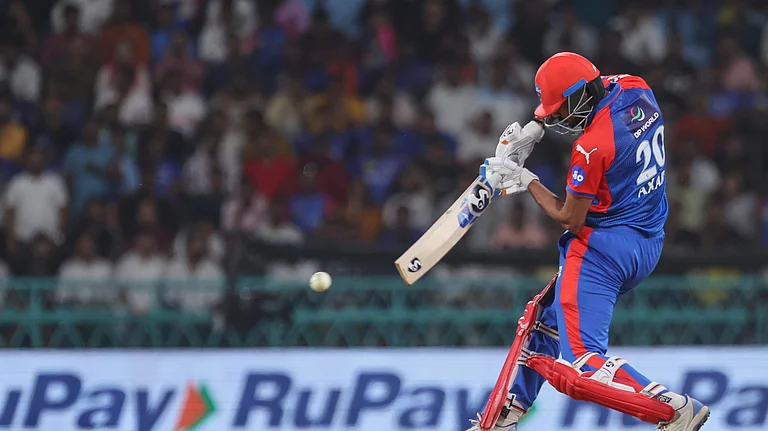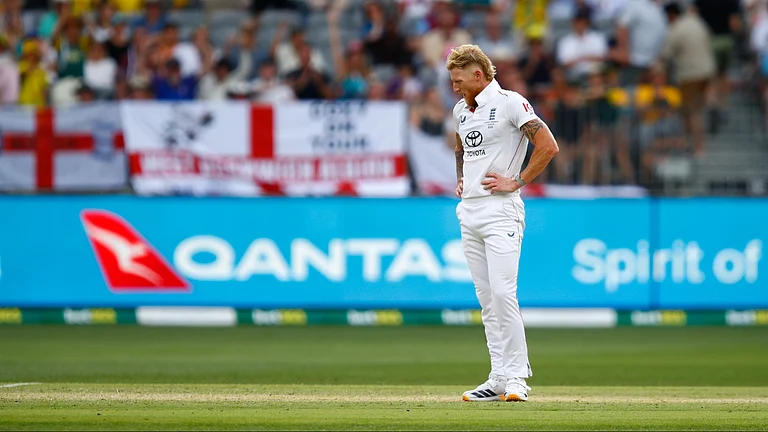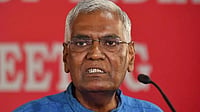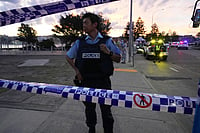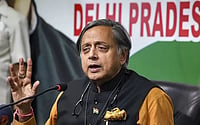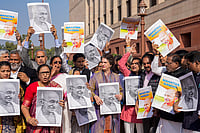Says a young reporter with a private TV channel known for its unambiguous political leanings: "The Commission's guidelines are very broad in nature. They do not spell out exactly what action would be taken against offending channels. So I don't think my bosses would be unduly worried." Ramesh Sharma, producer of India This Week for Doordarshan, is not sure about the efficacy of the guidelines either: "What has to be seen is whether the code has sufficient legal teeth vis-a-vis the private channels. It won't make any difference to private producers working for Doordarshan because Mandi House has its own guidelines for us, anyway."
Consider the dos first. In terms clearer than ever before, the Election Commission code allows the telecast of election rallies and speeches, the display of party symbols, the enumeration of opinion poll results and critical analyses of election manifestos before and during the elections. That's certainly a major departure from the past.
And then the don'ts. No coverage of incendiary speeches, no lopsided projection of one candidate in any constituency, no partisanship towards a single party to the exclusion of the others in the fray. Perfectly in order. What's more, the "fair and balanced" coverage that the Commission demands of every television channel need not be achieved in the course of a single programme or even a single day, but over a reasonable period of time: at least a week.
So, are all private producers and broadcasters breathing easy? Indeed, reasonability seems to be the hallmark of the Election Commission code. A far cry from the knee-jerk decision that Chief Election Commissioner T.N. Seshan took to prevent Prannoy Roy from analysing poll results on Doordarshan during the 1993 state assembly elections in four states. Seshan's contention was that Roy's analyses would influence voting patterns in the states that were yet to go the polls.
But times have changed. Privately produced news bulletins have become the norm on Doordarshan. The number of private channels airing current affairs-related programmes have multiplied. And the importance of the electronic media in the electoral process has increased manifold. The elaborate Election Commission code, as Seshan himself granted while making it public, is a recognition of this fact.
On the face of it, never before has the electronic media been allowed so much elbow room. The guidelines are especially encouraging for private producers who make news programmes for Doordarshan. Yesterday they were groping in the dark until. Today, they know precisely how far they can go with their coverage of the elections. But will Doordarshan allow them to go the whole distance?
Unfortunately, Mandi House still lives in the distant past. As one TV journalist covering politics for a leading Delhi-based software producing house points out, the picture is not quite as rosy as it seems. Because Doordarshan, as is its wont, will issue its own set of guidelines to private producers, ostensibly in furtherance of the Election Commission's 'revolutionary' code, and interpret it in its own warped way. "The new DD guidelines (issued on March 23, before the announcement of the Commission code) are stupid, to say the least," complains the indignant journalist. "Close-ups of poll candidates and election symbols are forbidden. So we have to shoot everything from mid-shot distance. Besides, Doordarshan has barred the use of soundbites from election speeches." One wonders whether the Election Commission can really force Doordarshan to change its ways.
Or compel the private channels to fall in line. Can the Commission prevent JAIN TV, for instance, from devoting footage to the BJP at the expense of other parties, or Zee and ATN from leaning towards the Congress? According to the procedures laid down by the Commission, which will obviously be the final arbiter in any dispute, all producers are required to keep a copy of every pro-gramme they put on air. But realistically, will any of the leading national parties be really inclined to move the Election Commission against a channel when they are busy fighting the elections?
In 1993, while Roy, whose programme was to go on air on Doordarshan, had to back out following Seshan's sudden clampdown, JAIN TV went right ahead and did its poll analysis programme from Moscow. "If Doordarshan flouts the guidelines, action can be taken because it is a Government organisation," says Sharma. "But the Election Commission can do little about the private channels. The code of conduct is only a paper tiger."
But a beginning, however small, has been made. And if the guidelines are followed in letter and spirit, Indian television viewers would be the real winners.







